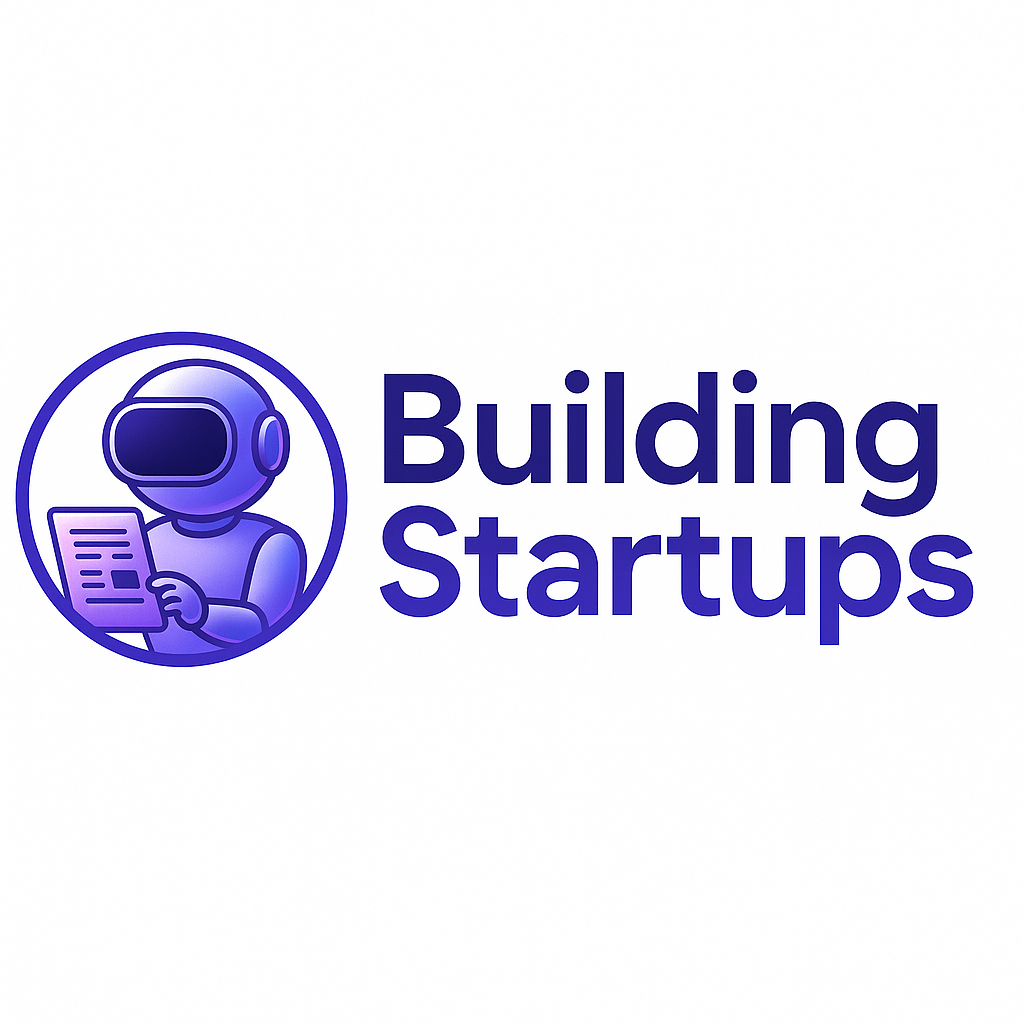Welcome
Hey there Early Stagers…
This week we look back on January’s performance to try and estimate how 2024 will be. We also pick up where we left off last week and dive deeper into value and offers to help you get to your PMF faster.
So, take a zip of that coffee and let’s dive in…
Yours truly,
Avinoam
January Summary
The first month of 2024 is already on the books and now it’s a good time to see how the startup industry performed.
Number of new startups
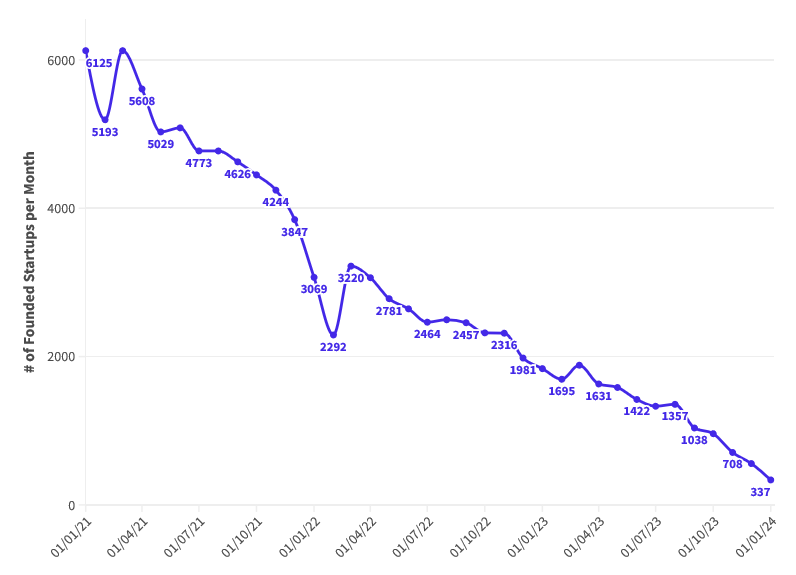
Source: Building Startups interpretation of Crunchbase data
The number of new startups founding each month continue to drop. The original data has a massive spike on January each year which we removed because it is probably due to the start of year registrations and not a real founding date. This means that 24 number can still rise a bit.
Early Stage Investment

Source: Building Startups interpretation of Crunchbase data
Like every January we see an uptake of investment dollars compared to the end of 23. But this doesn’t mean we hit the bottom but rather a normal phenomenon we see almost every January. It actually look like the downtrend still continues.
Number of Investments per Round
Angel Round

Pre-Seed Round

Seed Round
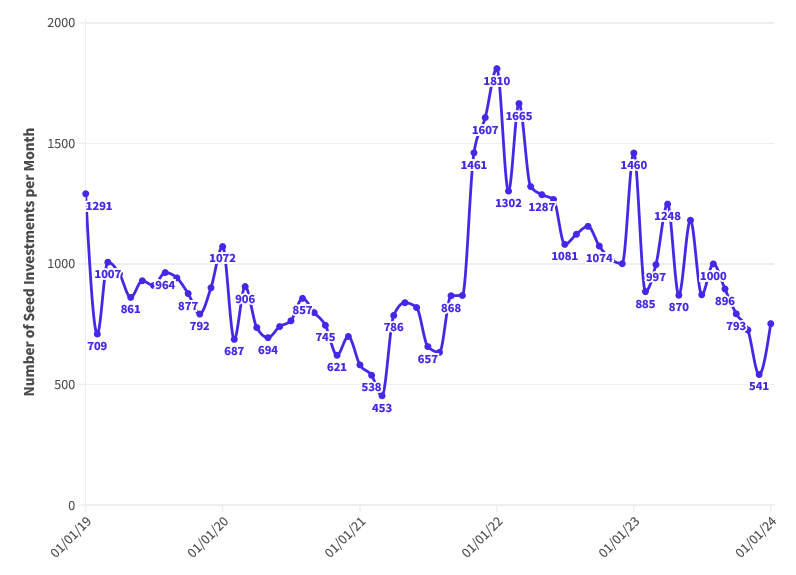
Series A Round
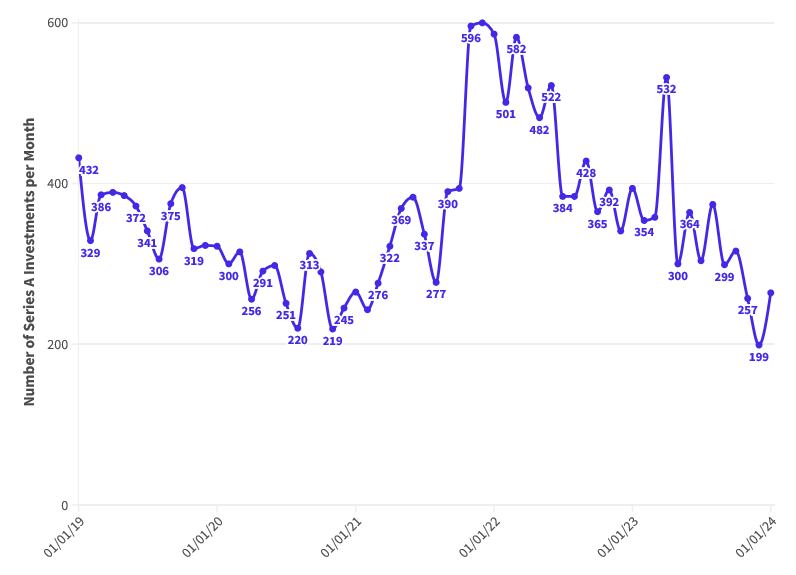
Source: Building Startups interpretation of Crunchbase data
Breaking down the investments numbers per round we see a big drop of angel round. This is trend started at Q4 of 23 and it symbolizes an awakening of angel investors. Professional VCs started dropping their investments all the way back at Q1-2 of 21 and only now are angel investors following this trend.
Top 10 Countries for January 24

Source: Building Startups interpretation of Crunchbase data
As usual, the US is on top but China is closing the gap due to the sharp drop in US investments. Interestingly, China is the only market in the top 10 that shows growth. All the others are dropping sharply, with most markets dropping more than 50% compared to 01/2023.
Hiring Update For Startups
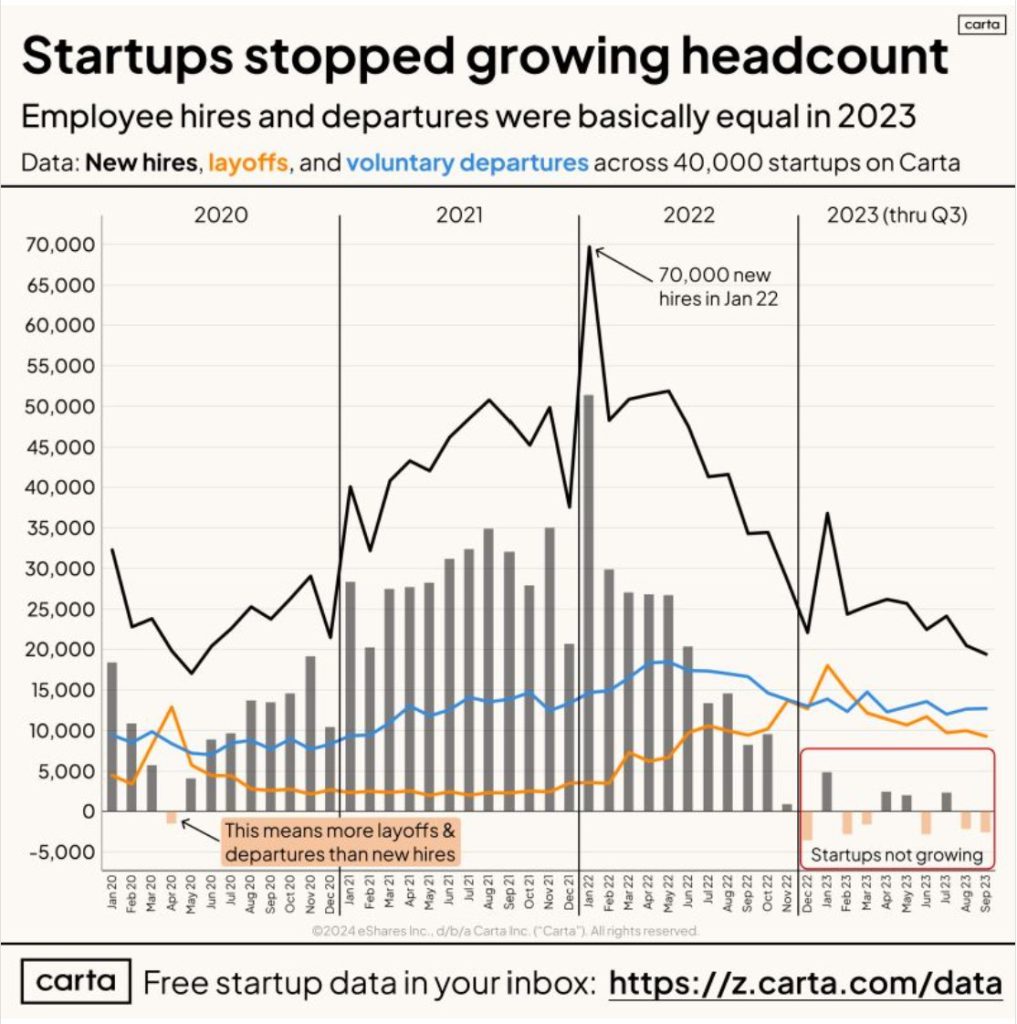
In an industry where growth is everything, seeing such a hiring freeze is pretty dramatic. It shows how bad the startups ecosystem is.
The above image shows that between December 22 to September 23 we had 6 months where the US startup ecosystem actually shrunk in headcount. This is very alarming and it indicate how founders are starting to conserve cash to prolong runway.
We’ll be on the lookout for similar data for Q4 23 to see how things are going. Stay tuned…
P.S.
Here is the link to the original article if you want more details
Like our Stats? Subscribe to stay in the loop...
Do you like what you read? Subscribe to our FREE weekly newsletter and join hundreds (soon we’ll get to thousands) of early stage founders just like you trying accelerate their PMF journey
How to Sell Without Selling
Last week we’ve talked about the value equation. We covered different ways to increase value with the hope of helping you improve your offer (Here’s a link if you missed it). This week I want to break down the different component of a winning offer so you to can build an offer so good that customer would feel stupid saying no to.
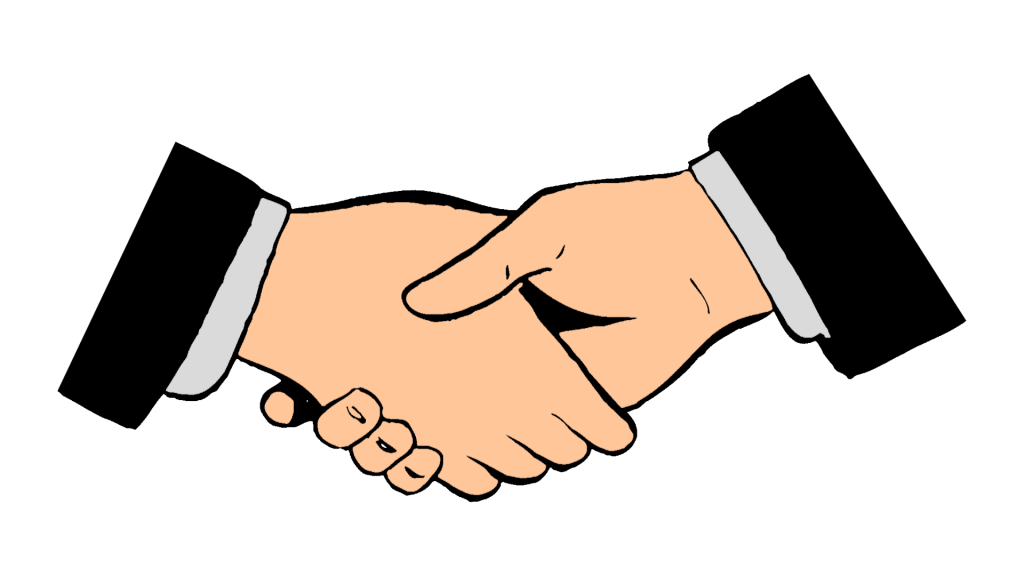
In his book Influence, Robert Cialdini gives a great example of how a great offer is built. He goes on to tell about a day where a pretty lady walked up to his door. When he opened the door she started asking him about his entertainment consumption habits. Once his proclaimed habits were established she offered him a subscription that would save him hundreds of dollars each month. And everything was based on his words…
It was an offer so good that he felt stupid to say no to.
Never mind that his consumption habits were a total lie to impress her, the validity of the offer is all the same.
If you can offer someone something that will clearly make his life better (save him money, time or effort) in a price which he still benefit from, only a stupid person would say no.
I know people are not completely rational about money, which is the whole point of the story in the original book, but the concept of the offer remains. Let’s break down the components of an offer and dive right in…
The components of an Offer
Let’s break down the different components of an offer, so we can understand the underlying mechanics of what makes an offer, and how to make it so good that only a fool would say no.
The components of every offer are:
- The Right Prospect – You need someone to make an offer to. But not every prospect is a good prospect. The basic requirement is that your prospect has a need that your product can solve. The bigger the need the better (for you). A good prospect will also have enough value to exchange (A.K.A. money) for what you are offering to make the offer mutually beneficial.
- Mutual Value – Every offer is basically an exchange of value. You need to give something in order to receive something. But if only one side “wins” (get more value) than this is not a good offer. In a good offer both sides get more than what they give. This is possible because value is subjective and we all value different things differently.
- Trust – Both sides must be able to trust each other that they will get what they are promised. The level of trust doesn’t have to be equal, but it does need to be more than the risk each side takes. To simply put it, you must trust that the other side will give you (or be able to give you) what you want and the other side must trust you to do the same.
- Risks Reduction Mechanisms – Every offer has a risk associated with it. The higher the risk, the harder you will have to work in order to get your offer accepted. Risk reduction mechanisms work to build trust and minimize the risk to make the offer easier to accept.
- Urgency Mechanisms – People hate making decisions and will delay as much as possible to take one. Every good offer must have an urgency component to get people to act now.
You can think about it as components to a recipe. If we want to produce something tasty we need the right blend of components.
Optimizing Offers
Now that we understand what offers are made of, let’s start crafting a great offer. I’m a big believer in ownership and when making offers as a new startup we have to assume that we will be the ones making the offer (to our customers).
And because most of the readers of this newsletters are early stage startups, I think we can agree that most prospect still don’t know who we are and thus there is no real trust. This means that the prospect is taking a huge risk here and we need to take actions to mitigate that risk.
Value Creation
Let’s start with the core component of our offer, value. Every deal is an exchange of value. When crafting our offer we need to ensure that the prospect perceive the value received as much higher that the cost paid (time, effort, information, money etc.)
Notice that I used the word perceived, indicating that value is subjective. To craft a great offer we need to start with understanding how our customers perceive value and how they quantify it and prioritize it.
If our prospect value time as the most important resource, the more time we save him, the higher the perceived value of our offer will be, regardless the cost it take us to deliver.
This is an important concept to understand because in order to generate profits we must break the connection between cost and value. The good news are that tech is an amazing enabler of providing a lot of value with minimal cost…
Building Trust
Once we have a good value to price ratio the next step is to build trust. For a prospect to accept our offer we need to build a few different types of beliefs:
- The prospect must believe that he will get our product once he pays for it.
- The prospect must believe that our product can really solve his problem.
- The prospect must believe that he will be able to use the product as needed.
We have to help our prospects believe all three beliefs if we want them to purchase our product or service.
Building all this trust require multiple tools and mechanisms. This is where design (impression) guarantees, social proof (logos, reviews, testimonials etc.) demos and other risk reduction tools are used to create the prospects’ confidence about our ability to deliver.
When we sit down to craft our offer we need to think about our startup’s reputation (probably non-existent) and the level of trust a prospect has about us. We need to incorporate what ever it takes to make our prospect believe all three beliefs, otherwise our offer will not get accepted, regardless of it’s value to price ratio (ever heard of the phrase “too good to be true”? That’s basically lack of trust…)
Creating FOMO
People are lazy. They hate making decisions and they hate taking action. If it was up to them they would not make any decision unless they have to.
Which means that people will always need a push to take action. This can be an internal driver (avoid pain or run toward pleasure) but more often than none, they need an external motivation like scarcity or urgency.
Every great offer must have a believable reason to act now. Without it our prospects will take their time and we will lose the close.
Summary
The easiest way to sell is to make great offers. Offers only fools will decline. It’s a game of value and trust. A great offer has a positive value to price ratio and a supporting trust building mechanisms to make any prospect believe the 3 beliefs we mentioned.
To make a great offer you need to start with defining the ideal prospect. Once you know who you want to sell to, you need to identify their value drivers and build a strong value to price ratio. To that we add reasons to act now (urgency) and top it all off with trust building mechanisms to push the customer to accept your offer.
If you want help crafting a great offer for your startup, maybe it’s time we talk…
Know Your Numbers
If there is one thing that every founder hear in every demo day or pitching scenario is this “You need to know your numbers“. But what numbers are you talking about? Today we’ll try to close this conversation once and for all so you won’t have any excuse NOT to know your numbers.

Every startup has different numbers they track on a daily/weekly/monthly basis, but there are some numbers that every startup founder must know regardless of your startup’s status. These numbers are:
- CAC – Customer Acquisition Cost. Calculated by adding all of your marketing and sales numbers in a given time frame and dividing them by the amount of new customers acquired during that time frame.
- LTV – The Life Time Value of a customer is the total purchase amount of an average customer at your startup. If you have a subscription based product, look at the average amount of months/years a customer keeps his subscription and multiply it by the subscription price.
- Burn Rate – How much dollars does your bank account drops each month. To calculate take you startup’s bank balance in two consecutive months and subtract the amounts.
- Runway – The length of time (usually in months) you have to operate given your bank balance (cash reserve) and Burn Rate.
- DAU/MAU – Daily or Monthly Active Users. This is more of a vanity metric as it doesn’t translate to revenue straight away, but it’s a nice number to know. It’s the number of active users on your platform.
- Time To Profitability – This is the length of time (usually in months) that it will take given your current growth rate to reach profitability (negative burn rate).
- YoY or MoM or WoW – These are growth metrics. Year over Year or Month over Month or Week over Week. They represent how fast a given metric is growing in a specific time frame. To calculate: (Metric at this time – Metric at previous time)/Metric at previous time * 100.
There are many more metrics you can track, but the above are a must for every startup. The key with metrics is as follows: Make sure there is a direct correlation between the metric and the startup’s business performance. Also, Make sure that you understand what needs to be done given changes in the metric.
If you can’t connect a metric to a business performance or you don’t know what to do when the value change than what’s the point of tracking it…
Never miss an update
Do you like what you read? Subscribe to our FREE weekly newsletter and join hundreds (soon we’ll get to thousands) of early stage founders just like you trying accelerate their PMF journey
LinkedIn Treasure Trove
Following the success of last time, I’m bringing back this section of the newsletter. Every week I find interesting things on LinkedIn and I’m sharing them with you here.

From Use Case to Outcome
Every marketer will tell you not to talk about your features but benefits. Or more exactly, why people use my product…
But how do you transform a feature into a benefit? You use the following framework: Use Case (why/what) -> Capability (feature) -> Outcome (benefit). Here is the full article

Metrics
Earlier in the newsletter we talked about metrics. Here are a few more examples of metrics you can track.
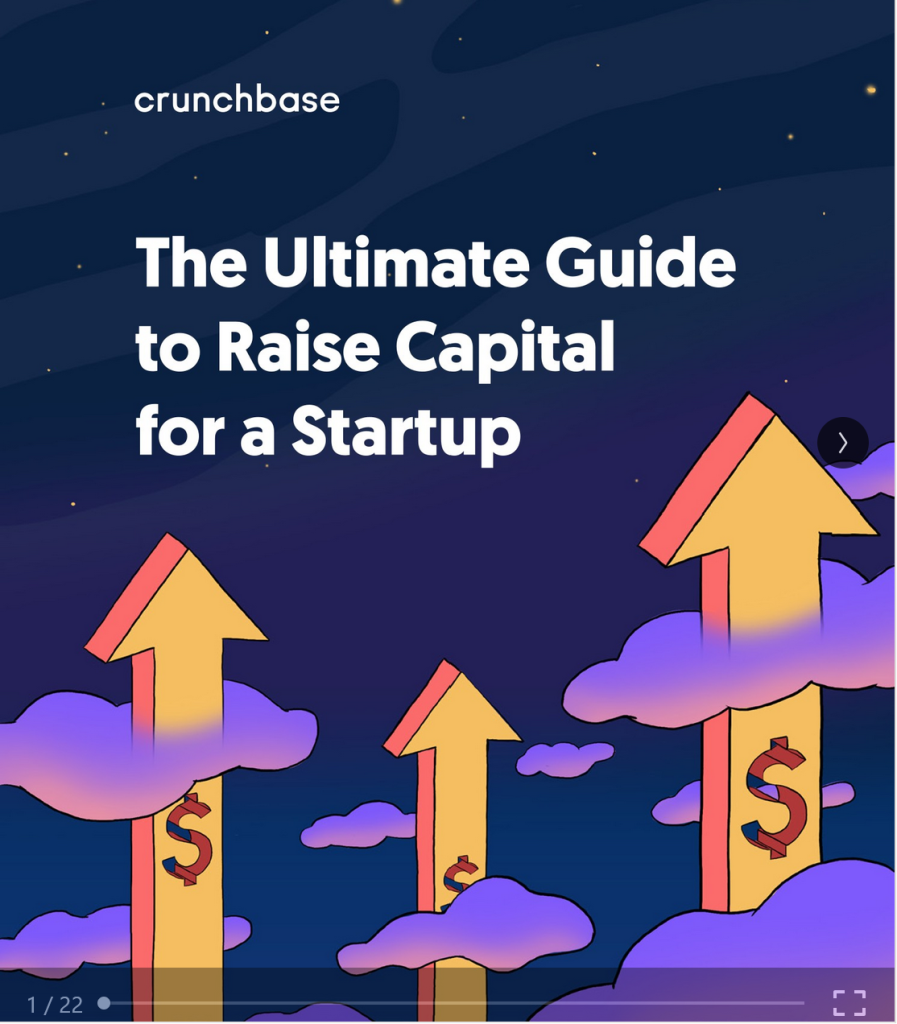
Another Fundraising Guide
I know you guys love these guides which is why I keep highlighting them for you… Here’s another fundraising guide, this time from Crunchbase.
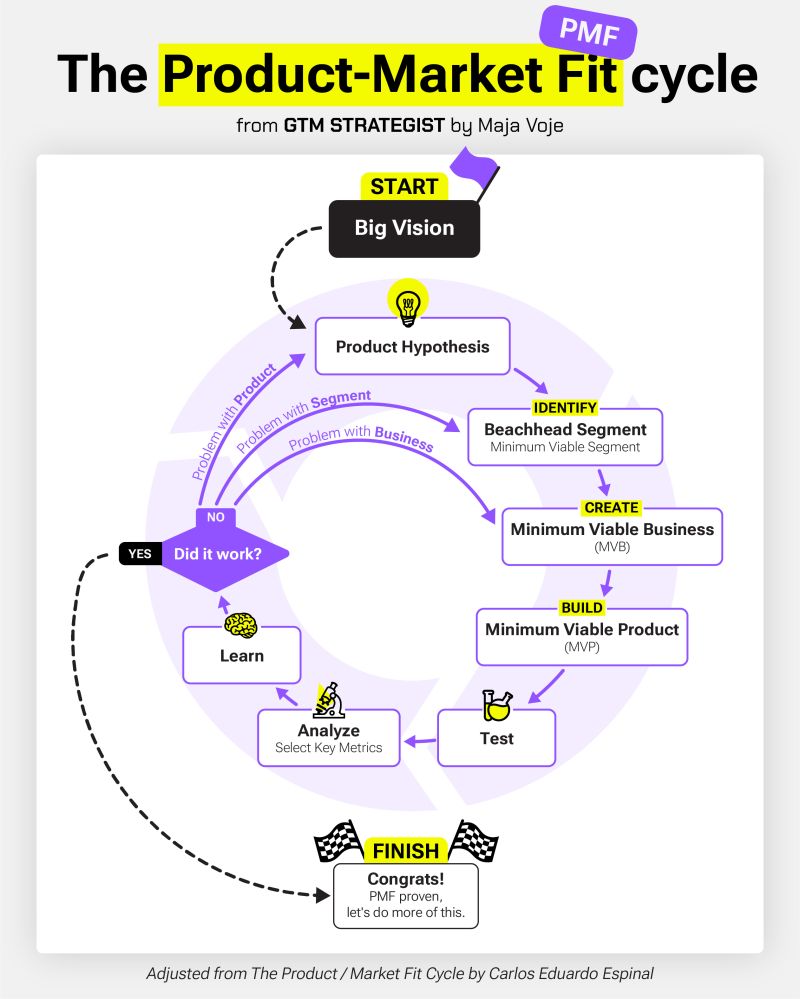
How to Find PMF
If you red this newsletter I assume you know what PMF is (if you don’t you can read my definition here). Whatyou probably also know is how much I love PMF models. Here’s one about how to find it.
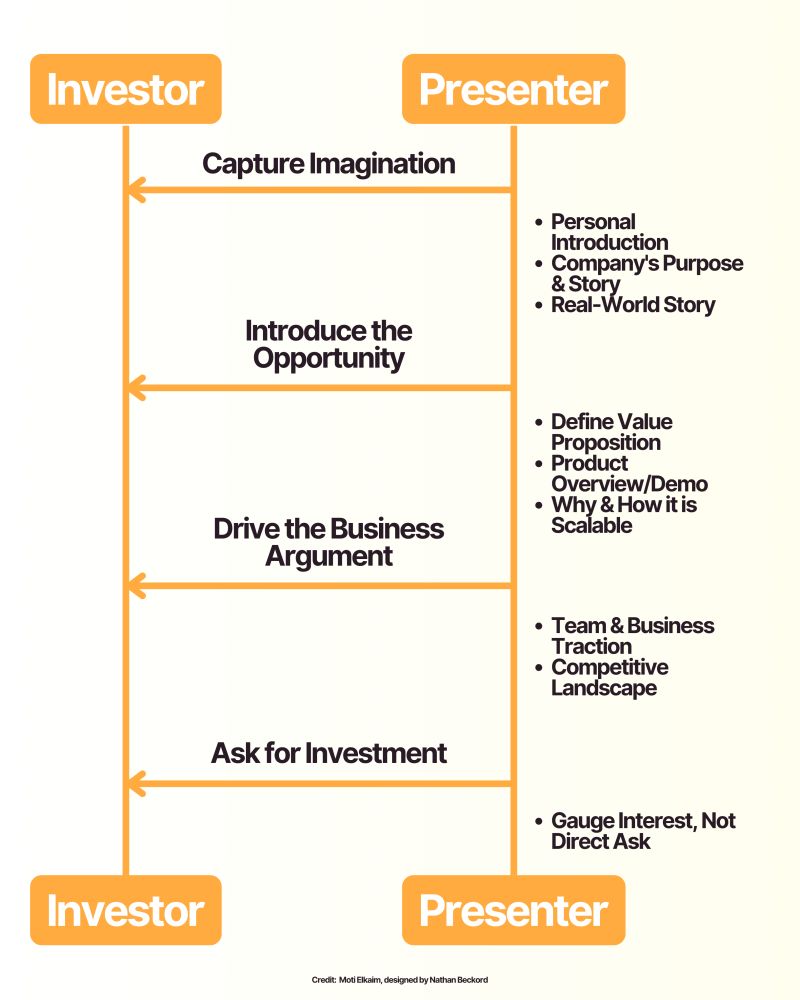
The old Pitch Deck is DEAD
Here is a new (and improved) framework you can use to make your deck more engaging.
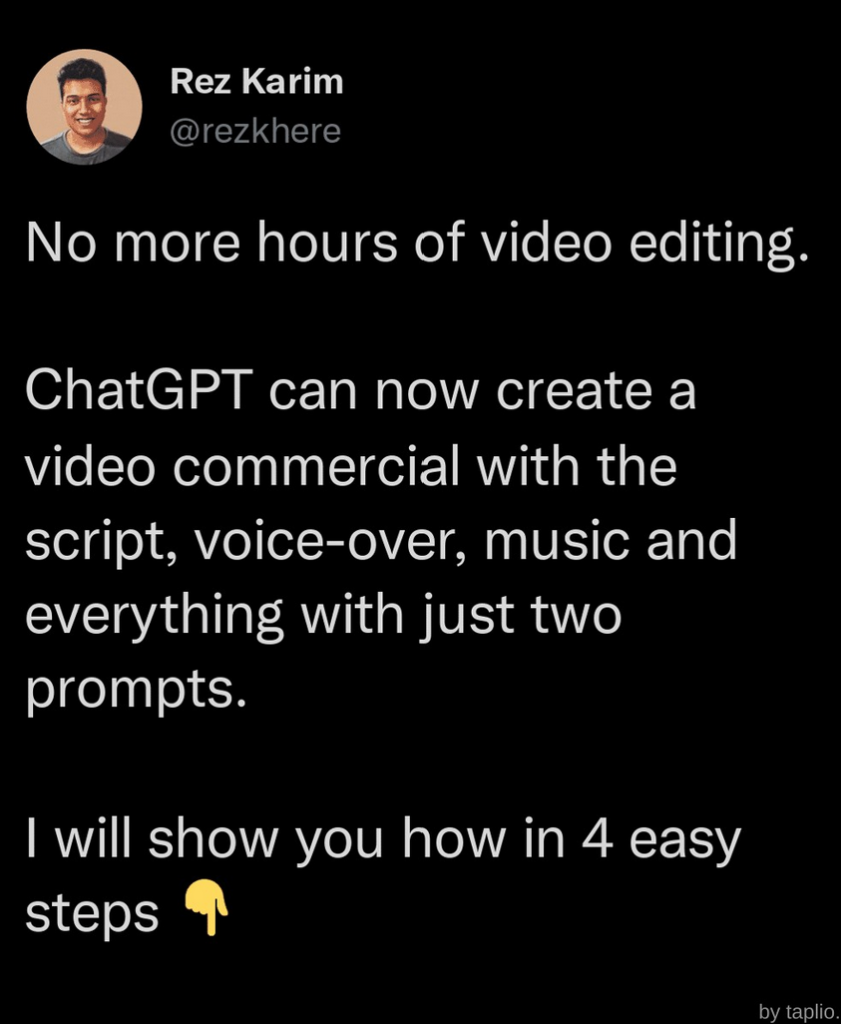
ChatGPT is now creating video ads
Here is the guide. Thank me later

7 Visuals I really liked
Here they are. Thank me later
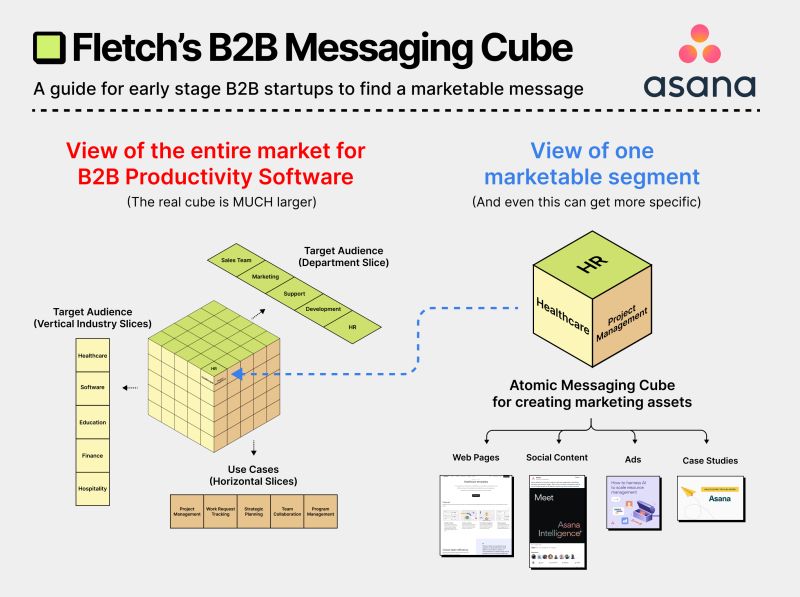
The Hidden Dimension of B2B Marketing
Most B2B Founders miss a hidden dimension in their market segmentation because they only see the market in 2 dimension:
- Horizontal: based on use case
- Vertical: based on industry
But there is a third dimension that can dramatically improve your segmentation: Department…
